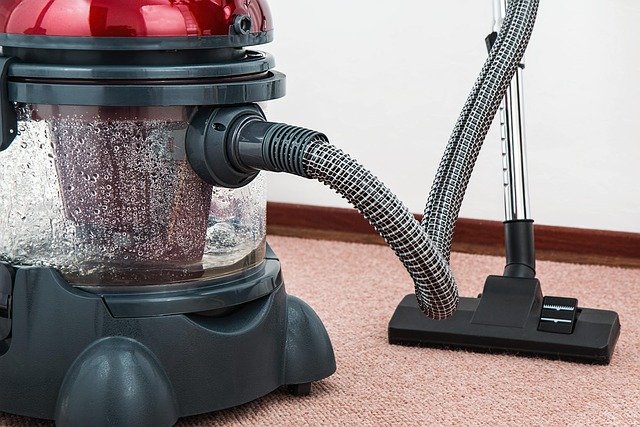Complete Guide: Professional Cleaning and Restoration
Discover how professional cleaning and restoration services keep homes and businesses healthy, safe, and functional. From routine maintenance and deep cleans to urgent water and fire damage restoration, this guide explains the services, processes, and cost factors you need to know. Learn how rapid-response teams, specialized equipment, and experienced technicians minimize damage and restore spaces efficiently.

Keeping indoor spaces clean and safe is essential for health, comfort, and property value. Professional cleaning services offer more than routine tidying—they deliver specialized solutions for everything from scheduled maintenance to disaster recovery. This guide walks through common service types, how pros handle water and fire damage, how emergency responses work, and what drives pricing so you can choose the right provider for your needs.
Common types of professional cleaning services
Cleaning companies provide a spectrum of services tailored to different situations and surfaces:
- Regular maintenance cleaning: Recurring visits for homes and commercial spaces covering dusting, vacuuming, mopping, trash removal, and disinfecting high-touch areas.
- Deep cleaning: Periodic, intensive cleaning that targets grout lines, baseboards, vents, behind appliances, and other hard-to-reach places to remove stubborn grime and buildup.
- Specialized cleaning: Targeted treatments such as carpet and rug cleaning, window washing (interior and exterior), upholstery care, and surface-specific methods that preserve materials.
- Emergency cleaning: Fast-response crews for sudden incidents like floods, sewage backups, fires, or hazardous spills that require immediate containment and remediation.
- Post-construction cleaning: Detailed cleanup after renovations or building work to remove dust, debris, and construction residues so the space is ready for occupancy.
Each service uses different equipment, cleaning agents, and expertise, so choosing a provider with the right specialization matters.
How professionals restore water-damaged properties
Water damage requires a methodical, time-sensitive approach to prevent further harm and mold growth. Typical restoration steps include:
- Assessment: Technicians inspect the site, locate the water source, classify the contamination level, and document damage for planning and insurance.
- Water extraction: Powerful pumps and wet/dry vacuums remove standing water quickly to reduce saturation of floors, walls, and belongings.
- Drying and dehumidification: Industrial air movers and dehumidifiers accelerate drying of structure and contents, while moisture meters track progress to ensure target dryness.
- Cleaning and sanitizing: Affected surfaces and items are cleaned, disinfected, and deodorized to reduce health risks and prevent microbial growth.
- Repair and restoration: Damaged materials—drywall, flooring, insulation—are repaired or replaced to return the property to a usable, safe condition.
Speed is critical: delayed response raises the risk of structural damage and costly mold remediation.
Fire damage cleanup: more than soot removal
Fire incidents create complex damage from flames, smoke, soot, and firefighting water. Cleanup typically involves:
- Soot and smoke removal: Specialized cleaning methods and chemical agents remove soot from walls, ceilings, and HVAC systems.
- Odor mitigation: Advanced deodorization techniques, such as thermal fogging or ozone treatments, help neutralize persistent smoke odors.
- Content restoration: Personal items, textiles, and documents are assessed; many items can be cleaned, deodorized, and restored off-site.
- Structural cleaning and repair: Surfaces and structural elements impacted by heat, smoke, or water are cleaned and repaired or replaced as needed.
- Securing the site: Temporary board-up and tarping protect the property from weather, vandalism, and further contamination during the restoration process.
Experienced teams balance aggressive cleaning with careful preservation of salvageable belongings.
How emergency cleaning services operate
Emergency cleaning providers are set up to act quickly and decisively:
- 24/7 availability: Many companies offer round-the-clock response to handle incidents at any hour.
- Rapid deployment: Crews and equipment aim to arrive within hours, assess the situation, and begin mitigation to limit spread and damage.
- Specialized gear and supplies: Emergency kits include pumps, extractors, dehumidifiers, air movers, HEPA vacuums, and professional-grade cleaners or disinfectants.
- Trained personnel: Technicians follow established protocols for safety, containment, and remediation.
- Insurance coordination: Providers often document damage thoroughly and assist with claims to streamline the insurance process.
Fast, professional intervention shortens recovery time and reduces the likelihood of long-term issues.
What affects the cost of professional cleaning?
Several variables influence pricing:
- Service type: Routine cleanings are typically the least expensive, while specialized restoration and emergency services cost more.
- Size of the area: Larger homes or commercial spaces require more labor and time, increasing the overall fee.
- Degree of contamination or damage: Heavily soiled or extensively damaged areas demand extra labor, chemicals, and possibly replacement materials.
- Urgency and timing: After-hours, weekend, or emergency responses usually incur premium charges.
- Geographic location: Local market rates and travel costs can raise or lower prices.
- Service frequency: Regular contracts often lower the per-visit cost compared with single or one-off jobs.
Understanding these factors helps set realistic expectations and compare estimates effectively.
| Service Type | Typical Price Range | Key Price Drivers |
|---|---|---|
| Regular Maintenance (Residential) | $100 - $300 per visit | Home size, scope, frequency |
| Deep Cleaning | $200 - $450 per session | Level of detail, square footage |
| Carpet Cleaning | $0.20 - $0.50 per sq. ft. | Carpet condition, method used |
| Water Damage Restoration | $1,000 - $6,000 | Extent of water intrusion, repairs needed |
| Fire Damage Cleanup | $3,000 - $30,000+ | Severity of fire, structural repairs |
Prices, rates, or cost estimates mentioned above are approximate and may change over time. Independent research and multiple quotes are recommended before making financial decisions.
Choosing a reputable cleaning or restoration company means looking for certifications, documented experience, clear contracts, and good references. Whether you need weekly upkeep or an emergency restoration team, understanding the services, processes, and cost drivers empowers you to protect your property and health effectively.






